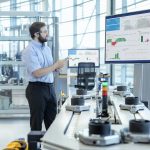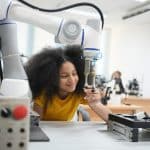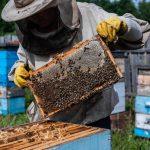The food industry is increasingly relying on cutting-edge technology to ensure the safety and quality of the food that ends up on our plates. This is not just a matter of fulfilling regulatory requirements—foodborne illnesses can lead to disastrous consequences for consumers, and for the reputation and financial health of food companies. In this context, artificial intelligence (AI) is emerging as a game-changer, capable of revolutionizing how we monitor and ensure food safety.
This article delves deep into the intersection of technology and food safety, focusing on how AI-driven pathogen detection systems can enhance food safety protocols. Drawing from authoritative sources and the latest data, the article presents an informative, comprehensive guide to the role of AI in food safety.
A lire aussi : Are Robotic Pet Companions Beneficial for the Wellbeing of Elderly Residents in Care Homes?
The Current State of Food Safety Monitoring
Let’s start by getting a clear picture of how food safety is currently monitored. Existing methodologies, though effective to a point, have limitations that could potentially put consumers at risk.
Most food companies have a preventive approach towards food safety. They rely on Hazard Analysis Critical Control Point (HACCP) systems to identify potential hazards and establish control measures before they become a problem. However, these preventive measures can be reactive, defined by historical data and past problems, rather than being proactive and anticipating new threats.
Cela peut vous intéresser : What Role Do AI Forecasting Models Play in UK’s National Energy Planning?
Moreover, traditional pathogen testing is time-consuming and labor-intensive. It requires culturing samples, which can take days to yield results. This delay not only slows down the supply chain, but also means that contaminated products might reach consumers before the problem is detected.
The Introduction of AI in Food Safety
To overcome these challenges, the industry is turning to artificial intelligence. AI-based systems can analyze large volumes of data more quickly and accurately than humans, and they can "learn" from this data to make increasingly accurate predictions.
AI can be used in various ways in food safety. One key application is predictive modeling, where AI algorithms analyze historical data to predict future food safety risks. Google scholar reports show that machine learning algorithms can predict the likelihood of foodborne disease outbreaks with a high degree of accuracy.
In addition, AI can be used for real-time monitoring of food production processes. Intelligent sensors can detect anomalies that might indicate a problem, such as changes in temperature or humidity that could lead to bacterial growth.
AI-Driven Pathogen Detection Systems
One of the most exciting applications of AI in food safety is AI-driven pathogen detection systems. These systems leverage AI and other technologies to detect pathogens in food samples quickly and accurately.
AI-driven pathogen detection systems work by integrating AI algorithms with advanced detection technologies, such as next-generation sequencing and biosensors. The system analyzes the genetic material in the food sample, looking for sequences that match known pathogens. Using AI, the system can quickly analyze vast amounts of data and identify pathogens within a matter of hours, rather than days.
AI-driven pathogen detection systems are not just fast—they’re also highly accurate. The learning capabilities of AI mean that the system can continually improve its accuracy by learning from each analysis it performs.
Enhancing Food Safety Protocols with AI
So how can AI-driven pathogen detection systems enhance food safety protocols? There are several ways in which these systems can make food safer for consumers.
Firstly, they can dramatically speed up the pathogen testing process. This means that potential problems can be detected and addressed much faster, reducing the risk of contaminated food reaching consumers.
Secondly, they can improve the accuracy of pathogen testing. AI systems can analyze data in much greater detail than humans, and their learning capabilities mean that they continually improve their ability to detect pathogens. This can help to catch problems that might be missed by traditional testing methods.
AI-driven pathogen detection systems can also help to make food safety protocols more proactive. Instead of relying on historical data and reacting to problems after they occur, AI can use real-time data to predict and prevent potential problems.
Finally, AI systems can help to streamline the supply chain by making pathogen testing faster and more efficient. This can reduce costs for food companies, and make it easier to ensure the safety and quality of food products.
While there is still much research to be done, it’s clear that AI has the potential to transform food safety. By integrating AI-driven pathogen detection systems into food safety protocols, we can make our food safer and protect the health of consumers everywhere.
Big Data and AI: Streamlining the Food Supply Chain
The food supply chain is a complex network that involves a wide variety of processes, from farming and harvesting, to processing, distribution, and consumption. Ensuring food safety at every step of this chain is a monumental task, and that’s where the power of AI and big data comes into play.
AI algorithms, especially those using deep learning and neural networks, can analyze complex datasets in real time, unlocking insights that were previously inaccessible. In the context of food safety, these insights could reveal patterns and correlations that help identify potential risks earlier and more accurately.
For example, AI can analyze data from various sources, such as weather reports, agricultural data, and supply chain information, to forecast potential issues that could affect food safety. If a particular region experiences heavy rainfall, AI could predict an increased risk of certain pathogens and alert relevant stakeholders to take preventative action.
Furthermore, machine learning, a subset of AI, can constantly learn and adapt from the vast amounts of data it processes. Over time, the system becomes more effective at predicting and identifying potential risks, thereby enhancing food safety protocols.
Additionally, AI can enhance food traceability in the supply chain. By integrating AI with technologies such as blockchain and IoT sensors, food companies can track and monitor food products in real time as they move through the supply chain.
One such application is computer vision, a field of AI that enables machines to ‘see’ and interpret visual data. In a food processing plant, for example, computer vision systems can inspect food products for signs of contamination that may be invisible to the human eye, improving both food safety and quality control.
Conclusion: The Future of Food Safety with AI
It’s evident that AI-driven pathogen detection systems have the potential to revolutionize food safety protocols. By harnessing the power of AI, the food industry can ensure the safety and quality of food products more effectively and efficiently.
While traditional methodologies will continue to play a crucial role, AI offers a proactive approach. With its ability to analyze big data in real time, make accurate predictions, and learn from each analysis, AI can help the food industry anticipate and prevent potential threats.
Despite the significant progress that has been made, there’s still a considerable amount of research to be done. As this technology continues to evolve and improve, the food industry and researchers need to work together to fully realize the potential of AI in improving food safety.
Moreover, while AI offers many benefits, it’s important to remember that it’s not a silver bullet. It should be seen as a tool that complements, not replaces, existing food safety measures. A robust food safety protocol should combine the strengths of traditional methods and cutting-edge technologies.
The future of food safety is exciting, and with the integration of AI, we’re taking a big step forward in protecting the health of consumers and maintaining the reputation and financial health of food companies worldwide. Technology is continuously evolving, and in the dynamic world of the food industry, striving for innovation and continuous improvement is key to maintaining high food safety standards. The advent of AI in food safety represents a significant stride towards achieving this goal.
















